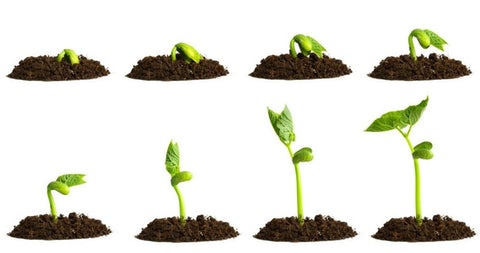Eustoma, also known as steppe gentian, is native to the limestone zone between the southern United States and Mexico. Modern eustoma cultivation has flourished in Japan. Commercial cultivation began in the 1960s. The eustoma flower color is elegant and bright, and the flower shape is unique and lovely. It is one of the most popular types of potted and cut flowers in the world.

Daily maintenance: The process of planting flowers is more beautiful from thebeginning of the seedlings
- Flower soil: fertile, loose and well-drained soil.
- Light: Like a warm, well-lit environment, long-day light can promote the differentiation of flower buds and achieve the purpose of early flowering.
- Temperature: The suitable growth temperature is about 15℃-32℃, which is more heat-resistant and resistant to short-term low temperature of 0℃.
- Moisture: Not tolerant to water and humidity. Adequate moisture is required during the growth period. High temperature and humidity should be avoided after the flower buds are formed.
- Fertilizer: Add organic fertilizer to the flower soil as base fertilizer. After 1-2 weeks of transplanting, apply Shimeile fertilizer once every half month.

- It is more heat-resistant and can be topped before flowering, making it more difficult to sow more flowering Eustoma, and requires high environmental requirements. Novices recommend buying flower seedlings with a higher survival rate.
- There are fewer diseases, and potted Eustoma is more resistant to soil bacteria.

Product information
| Product Name | Eustoma |
| Family | Gentianaceae and Eustoma |
| Origin | Japan |
| Habits | annual herb |
| Flowering period | May-November |
| Seed to flowering | about 160-190 days |
| Plant height | Plant height is about 15-25cm |
| Crown width | Crown width is about 20-25cm |

Note: There is a layer of seed coat on the outer bread of the seed, the appearance of the seed looks like a round particle, and the seed is wrapped in it. Do not damage the seed coat when sowing, just put the seeds on the surface of the moist substrate, and do not cover it when sowing. Be careful not to get water on your hands to avoid the coating in your hands.










